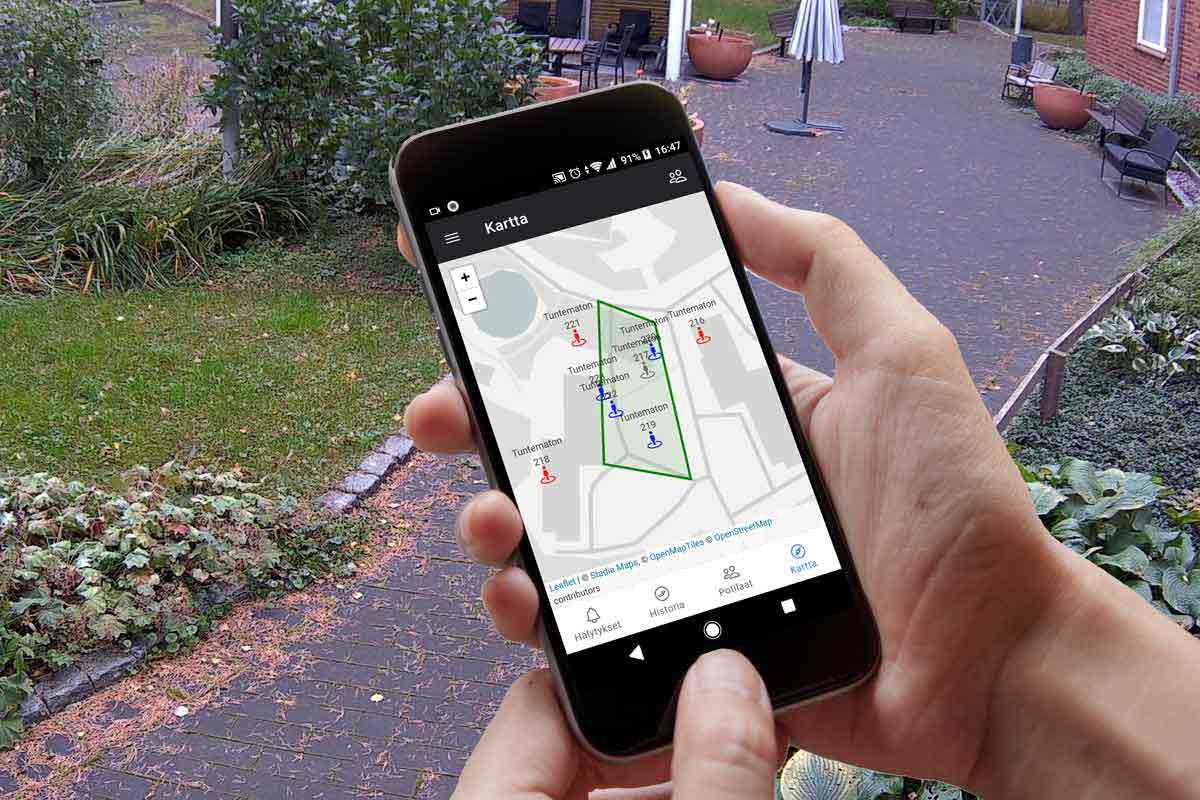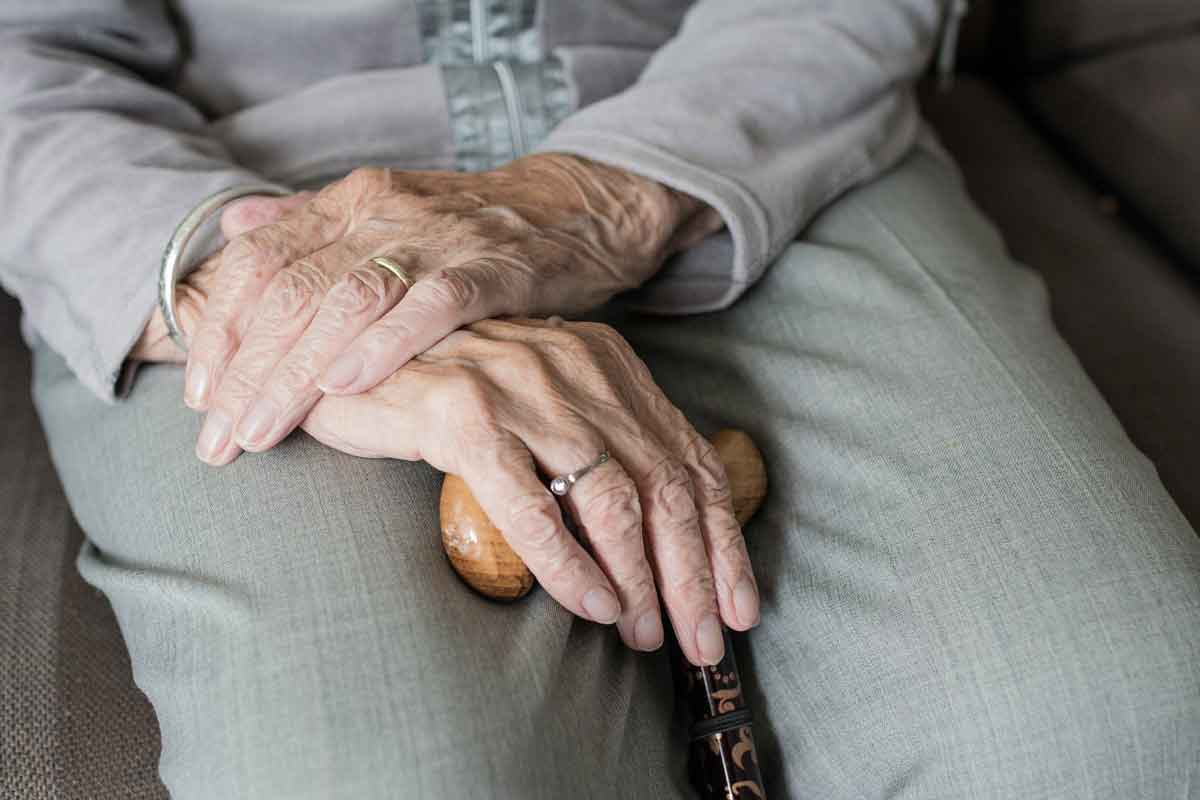
CASE: Kustaankartano
Improving the Quality of Life of the Elderly with a Digital Solution
A computer vision application monitors outdoor activities of people with memory disorders and issues alerts when necessary. Automated monitoring frees up staff time for care work and increases the safety of outdoor activities. The application was piloted at the City of Helsinki’s service center in Kustaankartano.

Kustaankartano
Improving the Quality of Life of the Elderly with a Digital Solution
A computer vision application monitors outdoor activities of people with memory disorders and issues alerts when necessary. Automated monitoring frees up staff time for care work and increases the safety of outdoor activities. The application was piloted at the City of Helsinki’s service center in Kustaankartano.
Kustaankartano is a versatile service center for elderly Helsinki residents and unemployed people in Oulunkylä, Helsinki. The service center offers opportunities for sports, crafts, and supported group activities. Kustaankartano serves as a common meeting place and is also home to many elderly residents. Additionally, many elderly people living nearby regularly attend day activities at Kustaankartano.
Unbiased Experimentation with Care Innovation
At Kustaankartano, the latest technology is tested without prejudice. The service center is currently running a memory yard experiment. The project's goal is to free up staff time for resident care by implementing digital, robotic, and AI-related assistive tools in elderly care services. Additionally, Kustaankartano serves as a service platform in the 6Aika CoHeWe project (Co-Created Health and Wellbeing), which seeks innovative disease-preventing and wellbeing-promoting solutions together with technology companies.
The project, which started in 2019, has already tested and continues to test several new technologies. These include motion-sensing smart floors, social robots, person recognition, sensory rooms, smart lighting, and interactive seal robots. The experimental technologies improve residents' quality of life and free up staff time for care work.
Research on technology adoption in care sector has found that technology implementation often increases time pressure and may even excessively replace human interaction. However, at Kustaankartano, the experiments have been met with positive attitudes. Staff, clients, and relatives are fully involved in the experiments, and Kustaankartano has indeed earned its position as a pioneer in care technology implementation.
Challenges in Finland's Care Sector
The care sector faces a workforce shortage. There is a shortage of both practical nurses and registered nurses, and the situation is not expected to improve on its own in the near future. The average age of care workers is high, and more than 18,000 practical nurses alone are retiring in the coming years. The nursing shortage is worsened by the gradually implemented new nurse-to-patient ratios and population aging.
In early 2019, serious problems were revealed in round-the-clock elderly care. Rush and insufficient nursing staff were contributing factors to deficiencies found in basic care. In operations focused on achieving profit targets, the most important thing - the wellbeing of those being cared for - has been forgotten. This problem is being addressed by increasing the number of nurses, but simply increasing the number of nurses is not a guarantee of high-quality care. Additional methods are needed, of which technology utilization is one.
The City of Helsinki has a self-monitoring plan for each service unit to ensure the quality of services provided. In addition to quality, self-monitoring affects workplace safety and wellbeing. The City of Helsinki has succeeded reasonably well in providing quality services. According to a customer satisfaction survey conducted with clients and relatives in 2019, the overall quality of service is at a good level, although there is still room for improvement. The poorest rating goes to individuals' influence on the course of their day.

Goal: Improving Quality of Life for the Elderly
In Kustaankartano's memory care unit, residents' outdoor opportunities are limited to outings accompanied by caregivers. The physical condition of memory care residents is mainly good, which would enable more movement than they can be offered. The City of Helsinki sought a technical solution to pilot for this challenge. Empirica's person recognition-based solution was selected for testing.
The project was able to start in spring 2020. The goal is to test how person recognition and smart cameras can enable residents' independent outdoor activities. At Kustaankartano, the outdoor area is partially fenced, but despite this, outdoor activities always carry the risk of leaving the yard area. Empirica's developed computer vision application enables risk reduction and facilitates outdoor activity supervision.
Independent outdoor activities without caregiver assistance aim to increase memory care patients' own influence on outdoor times, increase outdoor time, and improve safety, thereby enhancing their quality of life. At the same time, nursing staff have more time for care work.
Computer Vision Application and Its Development
The purpose of the development work was to test Empirica's person recognition solution and algorithms and teach them to recognize potential falls or area departures. The system recognizes outdoor falls and alerts staff about them. Additionally, the application keeps track of time spent outdoors, so that, for example, during severe cold or heat, residents can be guided indoors after even a short outdoor session.
The application also defines the boundaries of the outdoor area and monitors that these boundaries are not crossed. If any resident decides to leave the area, an immediate alert is made to staff. The application improves outdoor safety.
Challenges in the project were particularly caused by tracking multiple simultaneous subjects from camera to camera and monitoring multiple simultaneous video feeds with sufficient accuracy but still efficiently. Covering the entire area required multiple cameras, and the park-like view created its own challenges for their placement.
"Tracking people is difficult when people move behind obstacles or from camera to camera, and most of the work was practically related to that. There's a long way from detecting individual images to tracking people so that people's identities don't get mixed up. Machine learning is the best solution for managing these complex situations."
Elias Yarrkov, Data Scientist, Empirica Finland
In addition to monitoring the yard area, access to the yard is monitored with smart locks so that residents can move through locked doors in and out without nursing staff help. This enables residents' free outdoor activities at times other than scheduled outdoor times.
More Meaningful Life Through AI
Although information technology is often unfamiliar to elderly people and may be viewed with apprehension, residents at Kustaankartano have been enthusiastically involved in new experiments. Some solutions are aimed more at staff, but solutions targeted at residents and relatives have also been tested. Usability is particularly important in digital solutions for the elderly, as older age groups have significantly less experience using digital devices than younger people.
At best, digital solutions can help aging individuals manage their daily tasks independently for longer and thus improve their quality of life. In Kustaankartano's experiments, companies receive valuable feedback on their solutions directly from users, enabling service development in the right direction.
Towards Better Aging
Kustaankartano serves as an important testing platform for services utilizing new technologies. While companies get to test the functionality of their solutions in a real environment, nursing staff get to familiarize themselves with the opportunities brought by new technologies. The goal of digital solutions is primarily to streamline daily operations, increase safety, and free up caregivers' time for resident care and attention. Technology supports the goal of meaningful aging.